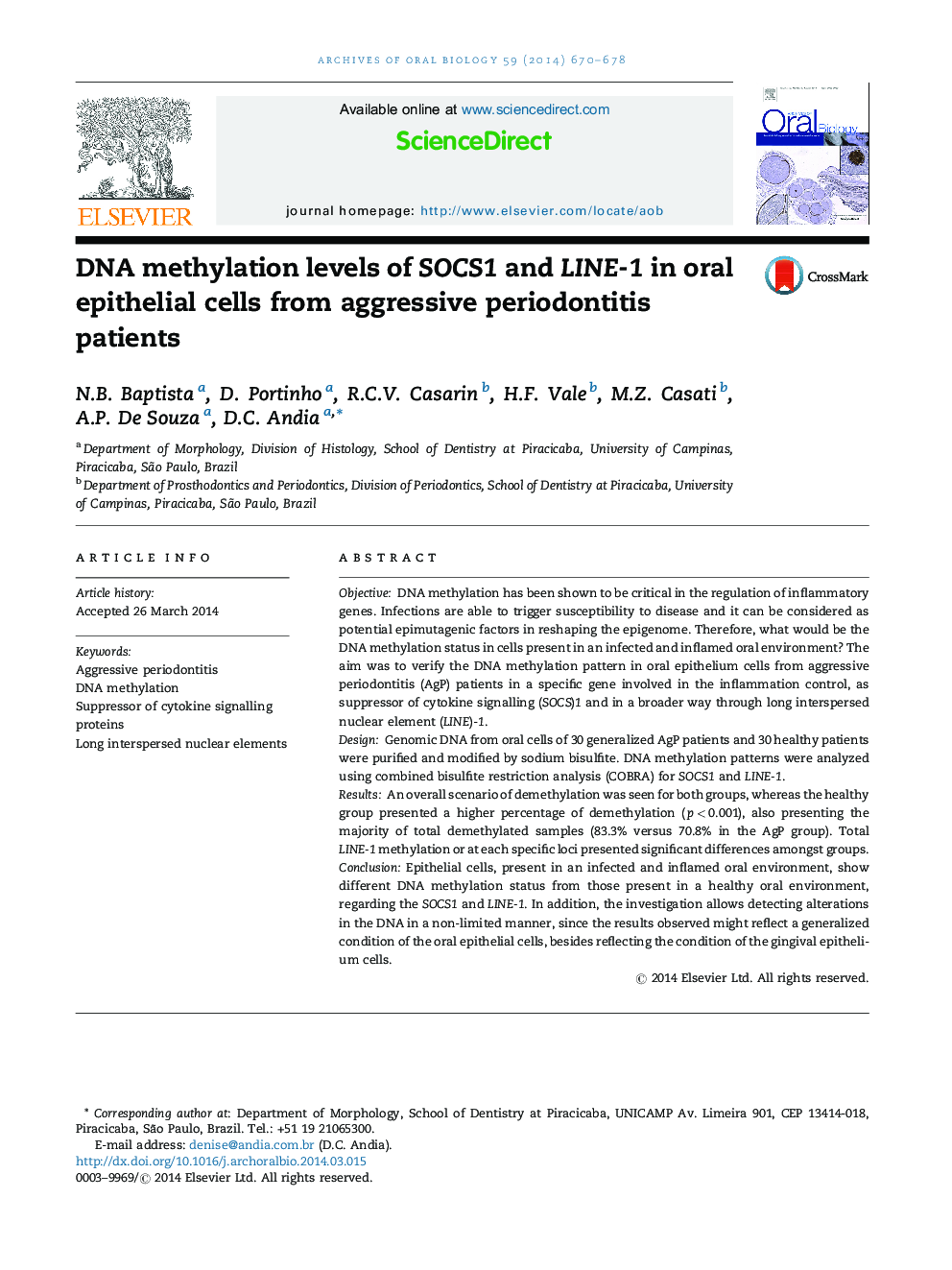| Article ID | Journal | Published Year | Pages | File Type |
|---|---|---|---|---|
| 3120961 | Archives of Oral Biology | 2014 | 9 Pages |
ObjectiveDNA methylation has been shown to be critical in the regulation of inflammatory genes. Infections are able to trigger susceptibility to disease and it can be considered as potential epimutagenic factors in reshaping the epigenome. Therefore, what would be the DNA methylation status in cells present in an infected and inflamed oral environment? The aim was to verify the DNA methylation pattern in oral epithelium cells from aggressive periodontitis (AgP) patients in a specific gene involved in the inflammation control, as suppressor of cytokine signalling (SOCS)1 and in a broader way through long interspersed nuclear element (LINE)-1.DesignGenomic DNA from oral cells of 30 generalized AgP patients and 30 healthy patients were purified and modified by sodium bisulfite. DNA methylation patterns were analyzed using combined bisulfite restriction analysis (COBRA) for SOCS1 and LINE-1.ResultsAn overall scenario of demethylation was seen for both groups, whereas the healthy group presented a higher percentage of demethylation (p < 0.001), also presenting the majority of total demethylated samples (83.3% versus 70.8% in the AgP group). Total LINE-1 methylation or at each specific loci presented significant differences amongst groups.ConclusionEpithelial cells, present in an infected and inflamed oral environment, show different DNA methylation status from those present in a healthy oral environment, regarding the SOCS1 and LINE-1. In addition, the investigation allows detecting alterations in the DNA in a non-limited manner, since the results observed might reflect a generalized condition of the oral epithelial cells, besides reflecting the condition of the gingival epithelium cells.
